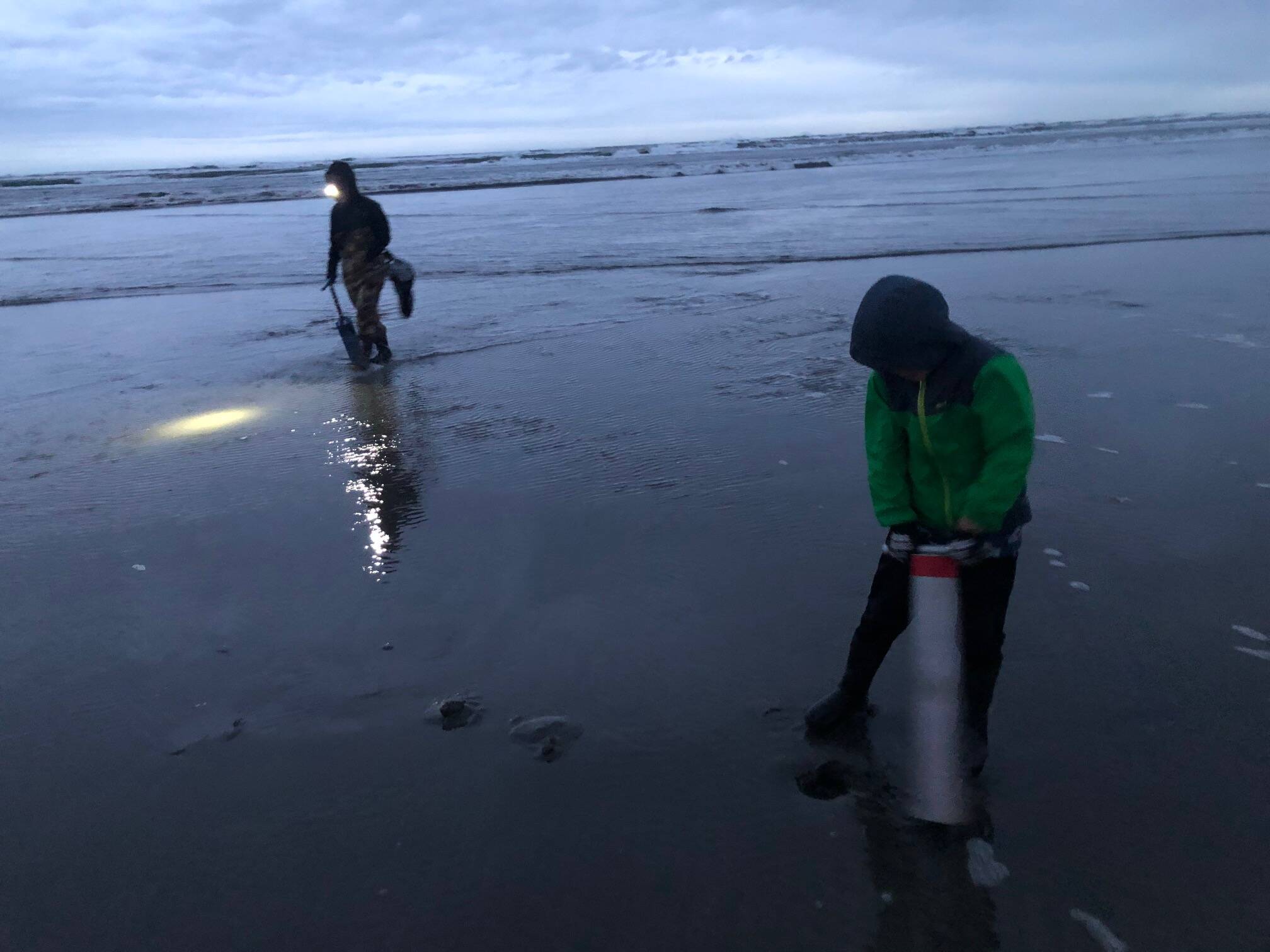Washington Department of Fish and Wildlife (WDFW) shellfish managers announced Mocrocks beach dig openers this past weekend, with continued clamming through Wednesday at both Mocrocks and Copalis beaches..
“It’s been about nine months since we last had Mocrocks open for digging, so we are thrilled to have diggers return there,” said Bryce Blumenthal, a WDFW coastal shellfish biologist. “We know this is another short notice opener, but that’s the unfortunate circumstance we face when reopening from a marine toxicity closure. The added bonus is offering harvest opportunities on consecutive days at Copalis and Mocrocks.”
The following digs during evening low tides:
Feb. 7, Tuesday, 7:42 p.m.; 0.1 feet; Copalis
Feb. 8, Wednesday, 8:11 p.m.; 0.4 feet; Mocrocks
The Washington Department of Health (WDOH) labs indicate domoic acid levels at Long Beach and Twin Harbors beaches were still above the health guideline levels. WDFW will announce future digging opportunities when marine toxin tests show it is safe to do so, according to a news release.
Domoic acid, a natural toxin produced by certain types of marine algae, can be harmful or fatal if consumed in sufficient quantities. WDFW shellfish staff will continue to regularly dig test samples of razor clams to monitor the situation. WDOH requires two test samples taken around seven days apart, must fall under the health guideline level before a beach can reopen for razor clam digging.
The daily limit is 15 razor clams per person. Under state law, a daily limit consists of the first 15 clams dug regardless of size or condition, and each digger’s clams must be kept in a separate container. Digging is prohibited in the razor clam reserve located just south of the Ocean City approach on Copalis, which are marked by 10-foot poles with signs. The most successful digging occurs between one and two hours before the listed time of low tide.



